Peloton: the next Apple or another scam?
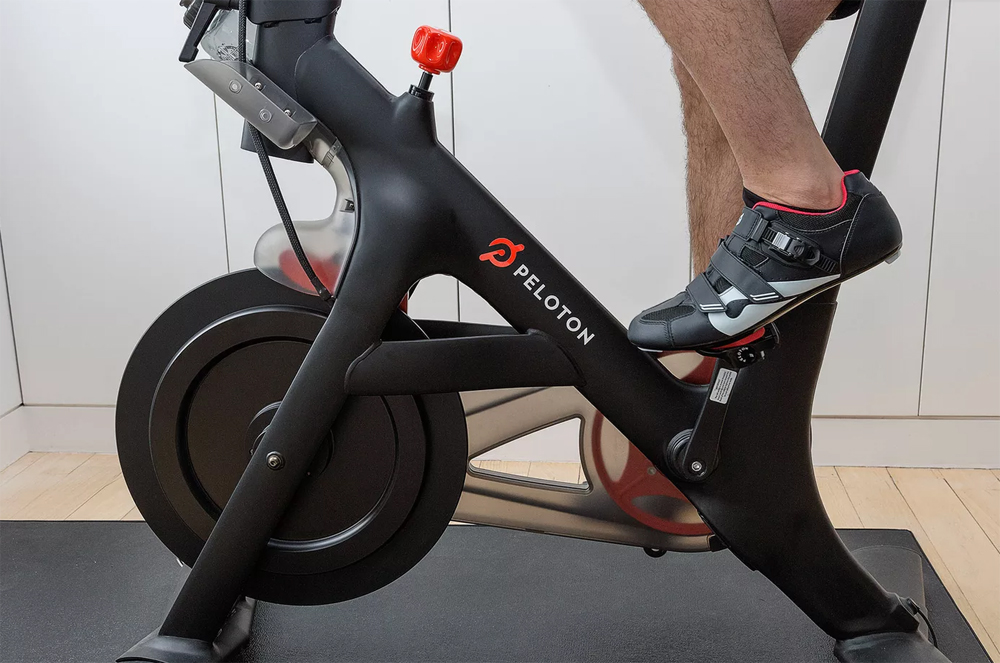
On Habré about Peloton so far know only from a short news article . But in vain. The case here is very interesting. This company makes bikes with built-in online streaming. It would seem that this is nonsense (and what could be simpler)? Nevertheless, it is already valued at more than $ 9 billion, hundreds of millions of new people are constantly investing in it, and it has tens of thousands of real fans, worse than Apple. Their devices are even called "iPhones among exercise bikes." We decided to find out what this phenomenon is and why everyone at Peloton is going crazy. And will there be the same story here as with Theranos, which at the peak too, I recall, was estimated at $ 9 billion.
What kind of device is this?
Peloton offers a home exercise bike and treadmill, with broadcasts of exercises and streaming lessons from trainers upon request. The cost of the bike, the main product, is $ 2,245, plus shipping and installation is another $ 250. Money seems wild, but device sales have already exceeded half a million. The price of a treadmill is $ 4295. Access to online classes is purchased separately and costs $ 39 per month. Users who have not bought a simulator can buy a subscription cheaper - for $ 20 per month.
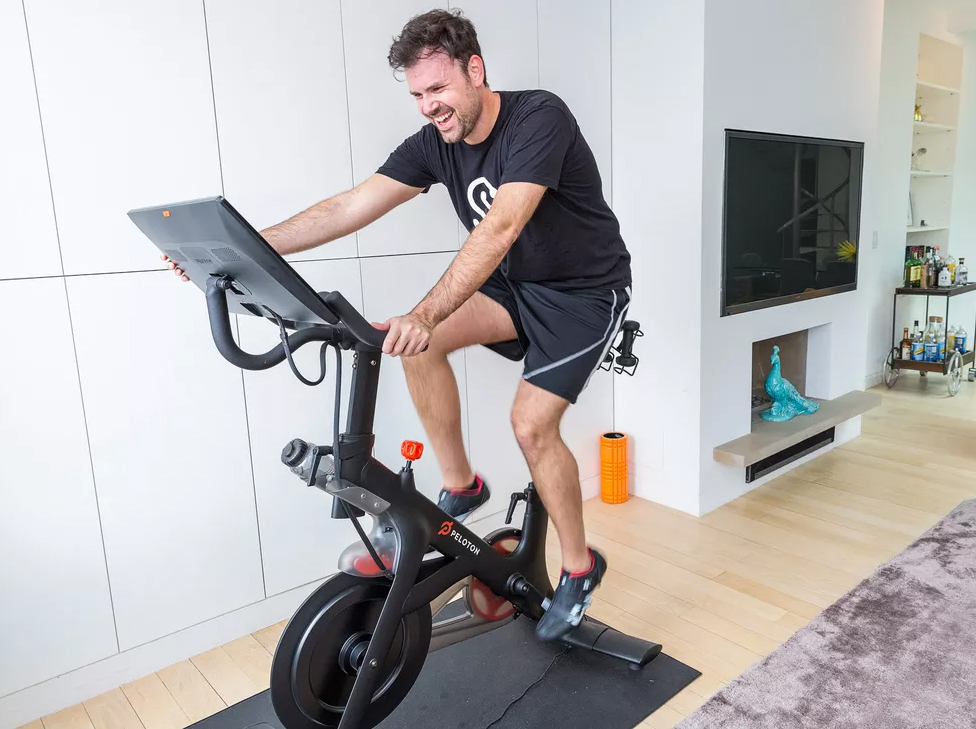
The main difference between the Peloton bike and the usual expensive exercise bike is the 22-inch touchscreen with Wi-Fi in front, which broadcasts your classes. You can compete with other participants, see the overall progress, watch the methodology of trainers. And there, perhaps, there will be a little more incentive to engage in, and time will pass faster.
Without a subscription fee, Peloton makes no sense. The user is given only 3 free lessons and a regular mode in which your current data is displayed on the screen. There are no records, no leaderboards, no community with which you work out every week. Therefore, if you have not scored for training, paying for a subscription is almost mandatory here. Most of the company's profits come from here: 600 thousand subscribers monthly bring it about $ 22 million.
During the ride, the display (in fact, just a tablet with an iOS application) shows all the stats. The duration of the workout and how much is left, the current speed, the covered distance, the heartbeat, the speed of pedaling, the intensity of resistance to scrolling, calories burned. Depending on how much energy you spend on a ride, you get a place on the leaderboard. This, by the way, gives an advantage to especially fat people who can press the pedals even at maximum resistance. In the ranking, they are always somewhere high. However, probably this is right: such people need motivation most of all.
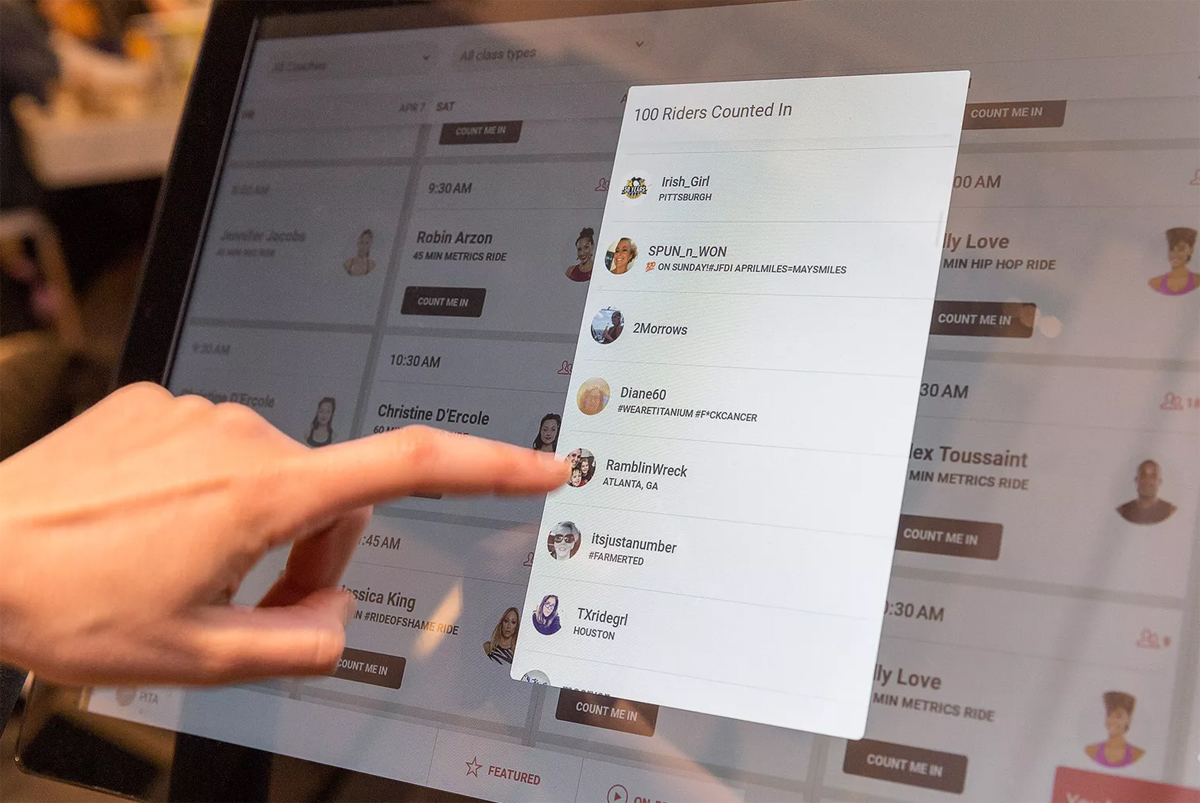
During the training, you see how new people come to the “class” and appear on the leaderboard - with their nicknames, age, gender and city. And if you take a pre-recorded lesson, you see the names of everyone who took it. As you pedal, your rank changes. You can set yourself the goal of entering the top 200 out of 500. Or defeating a specific “Steve, 35 from New Jersey”. And if you just want to practice at your own pace, and complete the tasks of the instructor, you can turn off the list of users and focus on training. The system also records your previous results for races of the current duration, and, if you want, compares you with other users of the same gender and age. There are lots of reasons to continue pedaling here.
One of the main success factors for Peloton is its instructors. This is a dozen specially selected trainers, beautiful, pumped up and popular, who are pleasant to spend time with. They have a lot of fans, they have promoted Instagram accounts, they are rumored to earn millions. Even if the rest of the Peloton technology can be recreated, company founder John Fowley says that no one will be able to assemble a group of such trainers.
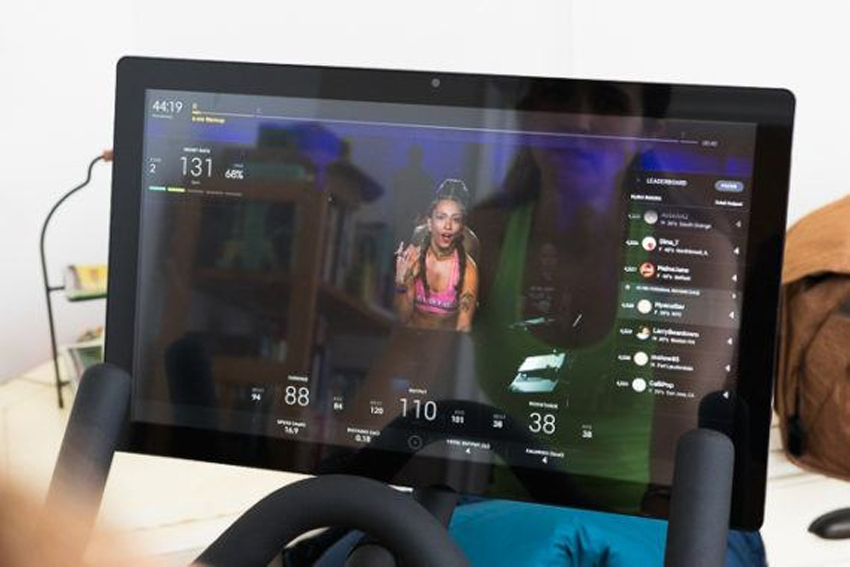
For example, one of the most popular, Robin Arzon , for his services, is also one of the vice-presidents of the company. Three months ago, she had 109 thousand subscribers. Now - already 265 thousand. Some of her classes in live stream mode are watched by 11,000 people. In the record - hundreds of thousands more, like some YouTube. We remind you that only for this they pay money, for people it is not just entertainment.
Peloton broadcasts 10-14 lessons per day. The first starts at 4:30 in the morning, the last at 10 in the evening. The company’s library has 7,000 classes divided into ten categories. From beginners to lifts with effort, where you need to stand on the pedals. From 5 minutes to 120 minutes, most about 40 minutes.
The user can choose a class depending on the instructor, the genre of music, the presence of a live DJ. And, of course, you can just ask a ride “in nature”, so that the display shows a mountain path or a bicycle path near a beautiful beach. All such lessons are also available on Apple TV or iPhone / iPad, if you have the right iOS application . For the application you need to pay separately at $ 19.50 per month (until recently it was $ 13, go nuts, what's going on).
The social impressions of the simulator are enhanced by the fact that all your friends with such bikes are also visible in the application. You can watch who is losing weight at what speed, compete with them, share information on Facebook. You can tie Fitbit and Strava profiles. Even when Peloton users are sitting at work, many of them peek into the application to see what their friends are doing, or to mark the classes in which they would like to participate.
Crazy price
Peloton is, to put it mildly, a pleasure not for the poor.
Just to get started, you need a minimum:
- $ 2245 - per bike (as the company sells at cost);
- $ 250 - for delivery and installation;
- $ 125 - for training shoes from Peloton;
- $ 468 - for a year subscription.
It turns out $ 3088, and this does not include taxes. Almost the average American salary.
In addition, it is advisable to pay extra:
- $ 60 - for a bicycle mat (to protect the floor);
- $ 50 - for the ANT + heart rate monitor;
- $ 25 - for a pair of dumbbells (0.5, 1 or 1.5 kg) for pumping the upper body during riding.
Peloton also sells a variety of headphones so that you can listen to classes at full volume without disturbing neighbors or household members. Well, all this is offered a guarantee. The first five years come with a purchase, but each additional year - $ 175.
Enthusiasts felt that, taking into account the cost of the gym, Peloton with regular classes “pays off” in about 6-9 months. This is in New York. In less expensive cities and in Russia, the device will probably never pay off.
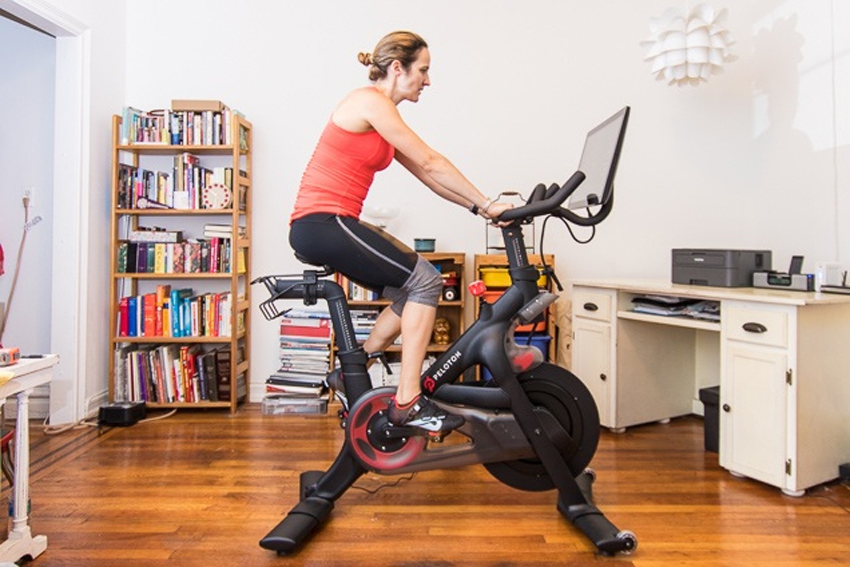
Those who do not want to give back the value of a used car or their entire monthly salary for one bike came up with life hacks. In a popular blog, a woman talks about how she made her “pseudo-Peloton” by attaching an iPad with an app to her much cheaper simulator. In this case, the company still has to pay it - for a monthly subscription. But everything about everything turned out only $ 550, and the results are similar. True, getting statistics, leaderboards and a complete sense of the “community” on which the company lives does not work. Here you need to have a full bike.
Another minus, except for the price, for some reason in such an expensive device did not make a pause button. You can not stop the lesson program, even if it does not go live, but from the library. It would seem that this is the main advantage of having an exercise bike at home - the ability to free yourself at any time and quickly go about your business. But with Peloton your program will not stop, and all your main “rivals” during the lesson (or you yourself, in one of the previous entries) will go far ahead. You have to either sweat twice as much, catching up, or start the lesson again. At the Peloton reddit forum, the pause function has been asked for two years already, but the company stands its ground - apparently, it has its own reasons.
Where is the hype from?
Peloton is not yet Uber or Tesla, but more than Quora, 23AndMe, Reddit, BlaBlaCar and GitLab combined. Moreover, the company's value has more than doubled over the past year. In 2018, they paid $ 4 billion for it, now it’s already $ 9 billion. Over the past few years, starting in 2014, investors have invested in the company more than a billion dollars that she already managed to spend.

Entrance to Peloton Studios in New York
The reason for such a gigantic valuation, especially with a very modest annual income of the company, in fact, is only one. Almost everyone who sat on the exercise bike was then crazy about him. And, as a rule, they become subscribers for years to come. The Peloton app rating, for example, is 4.9 out of five stars. All blog posts, all articles , all comments are all positive. No one else in this business has such a close, this is an anomaly. Only the wild price of the device is considered negative, but even with it, adherents say it is worth it.
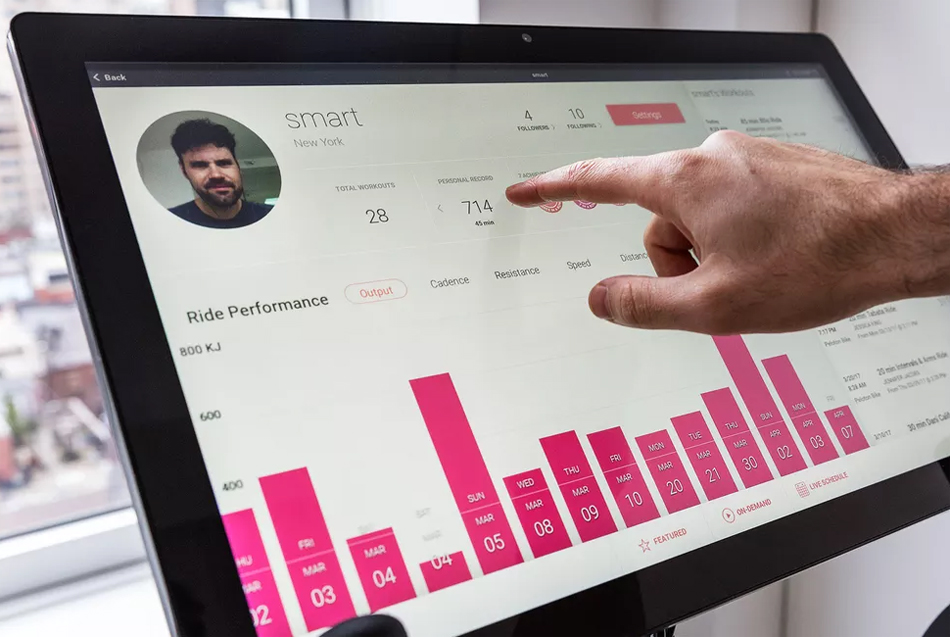
Peloton Interactive was founded in 2012 by John Fowley with four business partners. Fowley was then forty, he was married, with two young children, the debilitating position of one of the top managers at Barnes & Noble in New York. And he noticed that he was starting to get fat. Attempts to somehow set aside time for cardio training were unsuccessful. Every minute counted. But during his walk through the training halls of New York, he noticed that the main factor of their attractiveness - both for him and for other participants - was not equipment, not the brand and not the location of the hall, but the instructor inside. A good coach, calm and confident, made me want to come to class again. Another important factor was the music played in the classroom. He noticed that it was easier for him to play good music.
Fowley wondered if the whole process could be made more accessible. So that access to good coaches is not only for visitors to the most expensive gyms in New York, who paid hundreds of dollars for each lesson, but also for all those who work at home. For $ 400,000 from investors, he opened his own company and began developing an exercise bike and a service going along with it. The name of the company, Peloton, comes from the French term for a group of cyclists. The word “group” is key here: Foley initially understood that even homework should be done as a social activity, otherwise nothing will work.
The result - the model "Exercise bike as a service." The first such device, a home bike with streaming, the company introduced in 2014. And since then it has grown by more than 200% annually. In 2017, she became 500 thousand users (bike owners, bike path owners, application subscribers, riders inside the studio). Now - more than 1.2 million. Among them - more than 600 thousand active subscribers paying monthly.
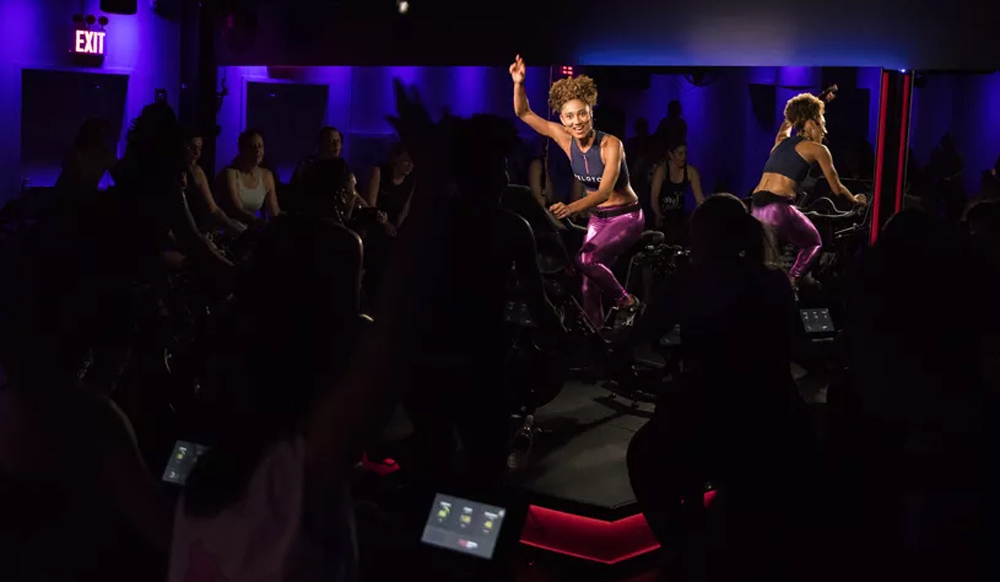
Coach during a lesson in a studio in downtown New York. 12 instructors write here 8-12 lessons every week. Each one is like a mini celebrity
At first, Peloton gained popularity in those. industry. Geeks from Silicon Valley began to ride it. And now everyone is losing weight this way - both housewives, and dads from the outskirts, who get far to the nearest hall, and all those who want to feel part of something bigger. Engage with friends, chat and chat, get to know coaches, see your name rising in the list of top riders. Instructors contribute in every way to this: from time to time they, even if the class is for a thousand people, ask about how anyone is doing. And even (sometimes) they remember who works where and who has a hobby. This is especially impressive for beginners.
“The culture is very strong,” says the creator of GroupMe, who lost 20 kg with Peloton, recharged with energy, and successfully sold his company Skype. “I feel like every activity motivates me.”

Among the "pelotonschikov" - actor Hugh Jackman, Olympic champion Usain Bolt, billionaire Richard Branson. Businessmen, for whom time is much more important than money, calmly lay out $ 3 thousand so as not to go to the gym. And then, they say, they compete with each other who could burn more calories in a week. Even those who have smaller businesses, and things are going more modestly, have reason to boast of their results, and troll less successful “bikers”. The company itself strongly supports this.
They say at Reddit that the thing really helps . Full of posts about how people dropped 20 kg, 40 kg and even more. Many people say that they lost at least 10 kg. Share schedules, secrets of success, encourage and congratulate each other. For the sake of this effect (and communication), many do not mind subscribing. And given that the world's population continues to get fat, such bikes (and treadmills) are expected to be in increasing demand.
Experts say Peloton is the first company to successfully capitalize on health, fitness and technology trends. Investors believe in the future of the company, believe in the benefit of the product, and agree to give money for it. And the leaders of the company compare themselves with Apple and Amazon, saying that they are going to carry out a revolution. Tom Cortez, one of the five co-founders, told CNBC in an interview:
At the start, we talked a lot about the Netflix and Amazon models, we talked about where Apple is heading now. Streaming services, large platforms - this is our future. When you think about how to change the future, you should look at those who do it today. We see that this is always an emphasis on user experience, this is brand development, this is bold innovation, even if they do not bring instant profit. Look what we have done in 5 years. And this is just the beginning.
Subscriptions to gyms in the US are growing at a very fast pace. Already 56% of Americans go to training. But - less than 50% of them are considered the “core” of the audience. Most periodically abandon the subscription, then later renew them again for a couple of months a year. Active users among buyers of home equipment - even less, about 30%. The vast majority of people buy treadmills and exercise bikes, use them, and then give up, at best, periodically recalling their existence. Even companies such as Fitbit, the number of "active" users is kept at the level of 50-70%.
Peloton has 96%. This is their retention coefficient, i.e. regularity of renewal of annual subscription. Moreover, people on average perform from 10 to 11 lessons per month. Each, again, an average of 40 minutes.

Maybe users are spurred on by the heavy price of pleasure. When you spent at least three thousand dollars - there is an incentive to pedal. But such a percentage of active users is an anomaly for the industry, no one has it. And it gives investors confidence that such a company has a future.
At the same time, Peloton still has no profit. Moreover - losses are growing! In 2019, the startup’s net loss amounted to $ 246 million. A year earlier, it was at $ 48 million. This is evidenced by the documents of the company that it submitted to the U.S. Securities and Exchange Commission on the eve of an IPO. And in May 2018, Peloton founder and CEO John Fowley told CNBC that the company was “incredibly profitable.” How this is combined with its real reporting - few people understand.
World as a Service
Whether it is scam or not, and whether Peloton can emerge from its growing losses due to the enthusiasm of the user base is one thing. And $ 9 billion is $ 9 billion. There are hundreds of companies producing exercise bikes in the world. And among them, only Peloton entered such a wild capitalization. Company founder John Foley is already a very, very wealthy man. There are many people in the world who want to repeat its success. Therefore, whether you like it or not, the business model of “training as a service” suddenly began to grow at a completely wild pace. There are literally hundreds of companies trying to launch their Palloton product and investing heavily in it.
Most simply screw the tablet onto the old simulator, and release an iOS application for the tablet. And suddenly a ride! The ambitions here are not very big, this can be seen even in marketing. Peloton called himself “Netflix Fitness” at the start. And these will promote themselves as "Peloton (some kind of training)." For example, “We Are Peloton Squats” or “Peloton Jumping Rope”. Prices, of course, are wild, everything is designed for geeks and desperate. Watching such a phenomenon that has appeared literally in the last two years is slightly unpleasant.
But many still try to go a little further.
Flywheel startup has become popular , trying to compete with Peloton directly. Also exercise bikes, with 43 studios across the country, with a home bike + tablet for $ 1999, which appeared in 2017. Last year, Peloton sued him, claiming the theft of patented technology.
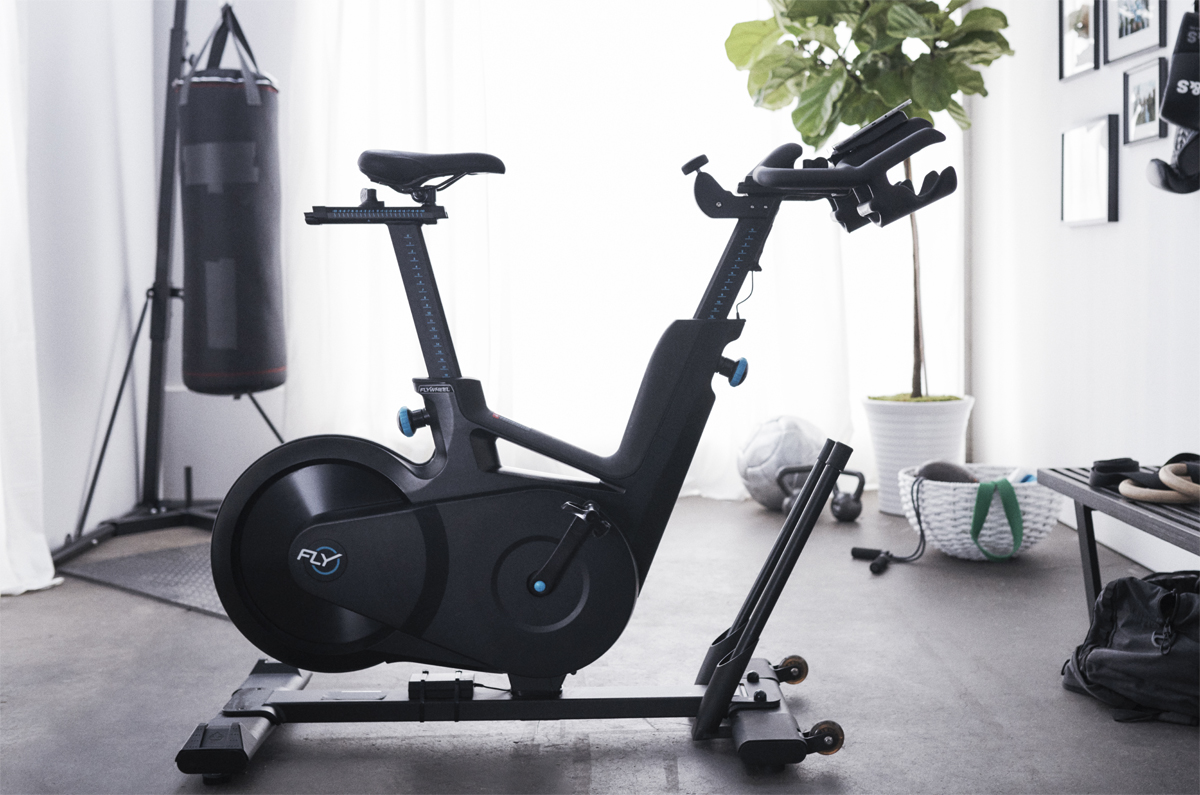
Strongly similar?
Rumble , a boxing training club that has received investment from Justin Bieber's manager, Scooter Brown, recently announced a partnership with developer Technogym. Now he will sell punching bags with sensors for $ 1,700 and access to lessons for $ 39 per month by subscription. And New York coaches , professional boxers and former wrestling fighters, are now becoming online celebrities.
Actively developing NordicTrack . Since 2015, this company has been offering three treadmills with streaming prices ranging from $ 1,699 to $ 2,899. The first year of lessons is free, then the subscription. Of course, $ 39 per month (of course!). An internet-connected exercise bike and home rowing device have also recently appeared. The company says it has 1.9 million users. Apparently, free subscribers are included in this figure.

In general, an amazing amount of these “smart” rowing machines was released. Startup CityRow from New York sells them for $ 1395, with a subscription for $ 19 per month. And the coach of the American rowing team Bruce Smith founded Hydrow , with the most quiet and most enjoyable trainers (they say) in the process of training. The cost of one such "boat" - from $ 2199, subscription to lessons - another $ 38 per month. All instructors are Smith's students and colleagues, and lessons are recorded and broadcast from real boats sailing along rivers.

Of even more unique things, Tonal is selling a muscle development simulator that looks like a giant iPhone mounted against a wall. There, on the big screen, the trainer shows how to do your exercise correctly. Well, you choose the strength, activity and duration of the exercises. Electromagnets show resistance, and the machine automatically adjusts it if it sees that it is too easy or too difficult for you now. Personal training mode is constantly changing thanks to AI. The device costs $ 2995, a subscription to streaming lessons - another $ 49 per month. “Smart” weights, rope, bench, strap and other “gadgets” go for $ 495. Installing an iPhone on the wall is another $ 250. At the same time, the thing is very popular, NY Times, Bloomberg, EnGadget wrote about it, everyone who is not lazy. So far, only available in San Francisco.
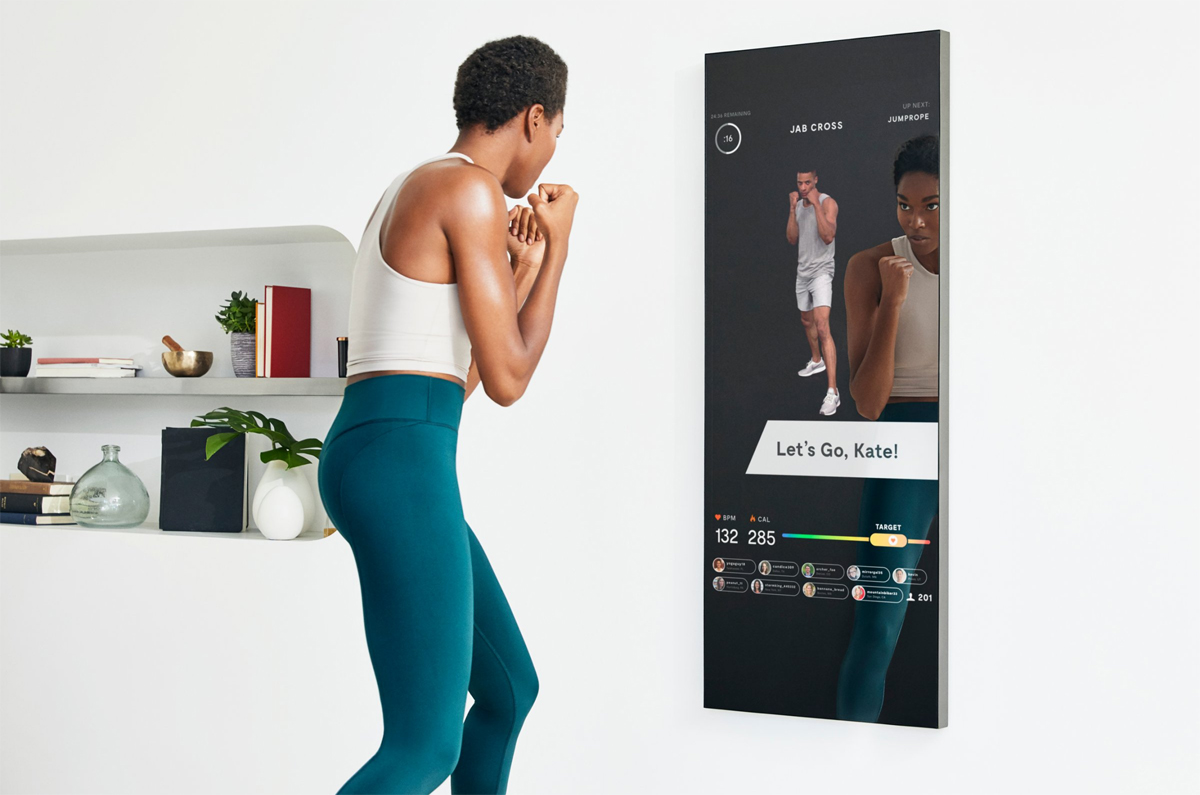
Something visually looks like Mirror to him - also a large screen on the wall. As the name suggests, this is a mirror, only smart. In it you can see yourself training. And, in parallel, an instructor who correctly performs the same exercise. Just like in group classes, only here you are alone, and you see yourself at the same time as a teacher, so it’s easier to focus and work properly (as the company says). There are classes in yoga, cardio, Pilates, barre, squats / push-ups, boxing. A piece costs $ 1495, the bundle comes with a Bluetooth heart rate beat tracker (or you can connect it to the Apple Watch mirror). A subscription to training is worth it - yes, you guessed it! - again $ 39 per month.
Peloton has literally in the last few years created a boom in a new type of exercise. Now different companies are developing massive platforms for them, trying to break ahead and capture a new market. At home classes and trips to the gym for training, a third alternative suddenly appeared. Very expensive, but - for many - real.
Well, how do you like this trend?
Do you believe in the future of gadgets like Peloton? Is it worth the money not to go to the gym? Are American investors right, investing hundreds of millions in a loss-making company every month?

All Articles